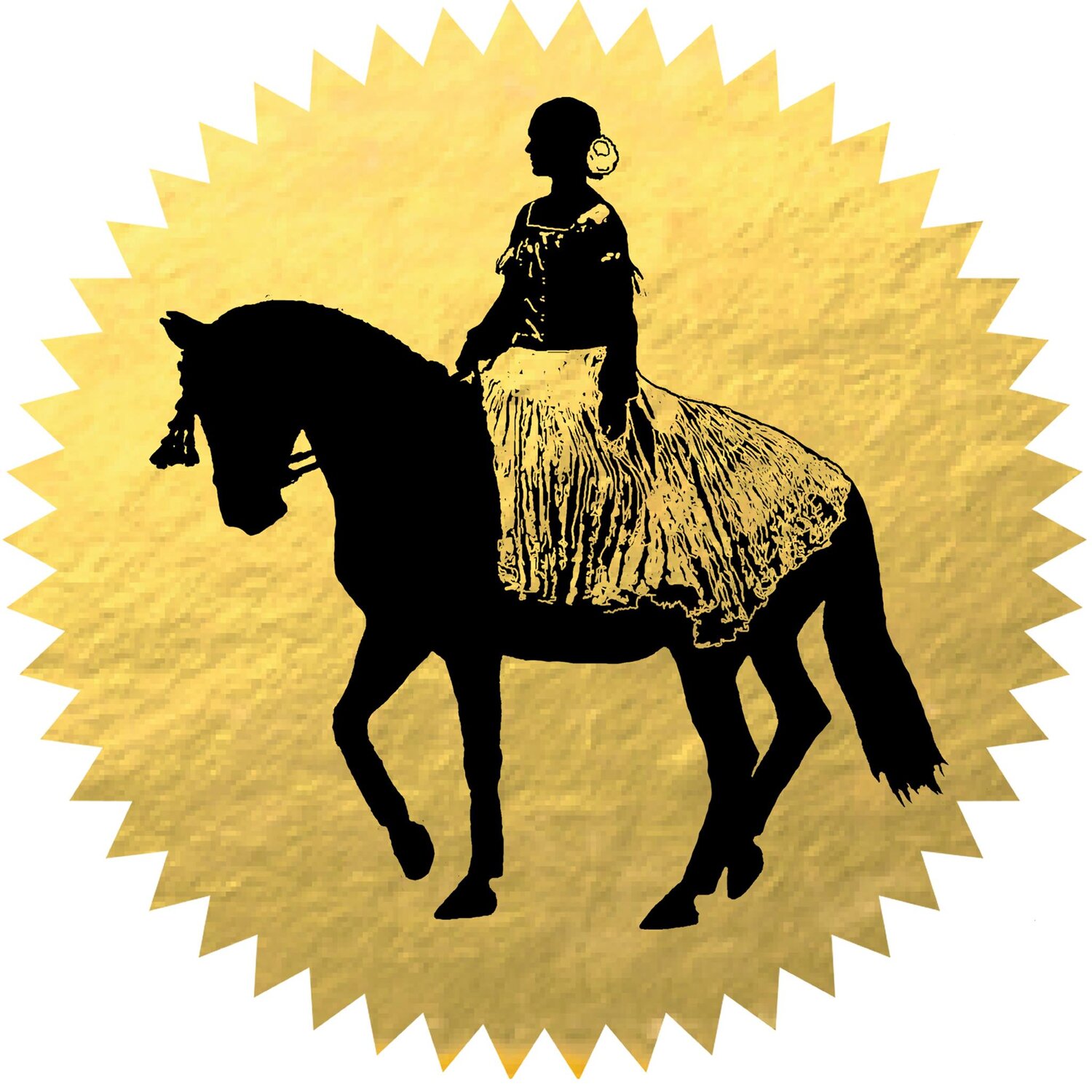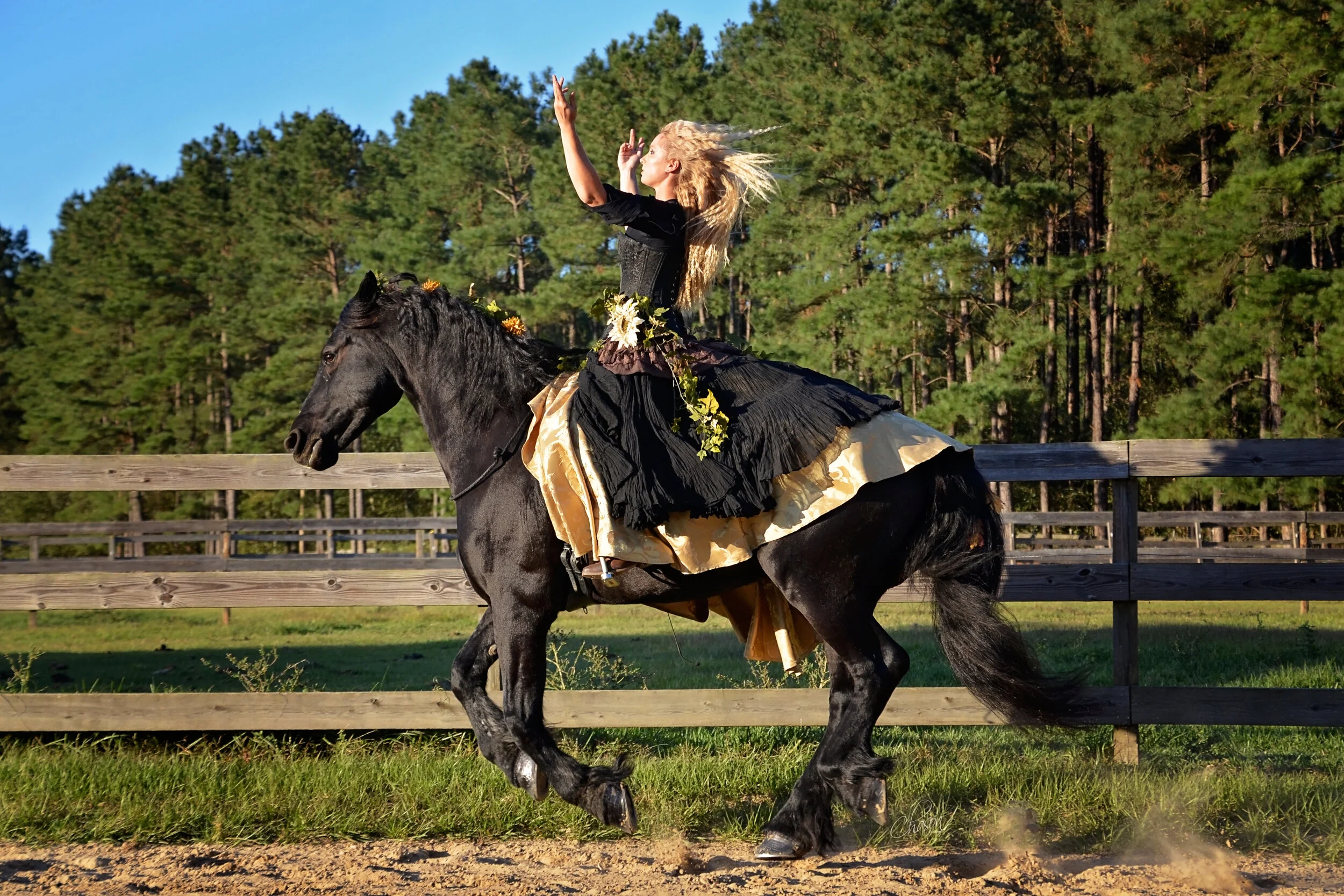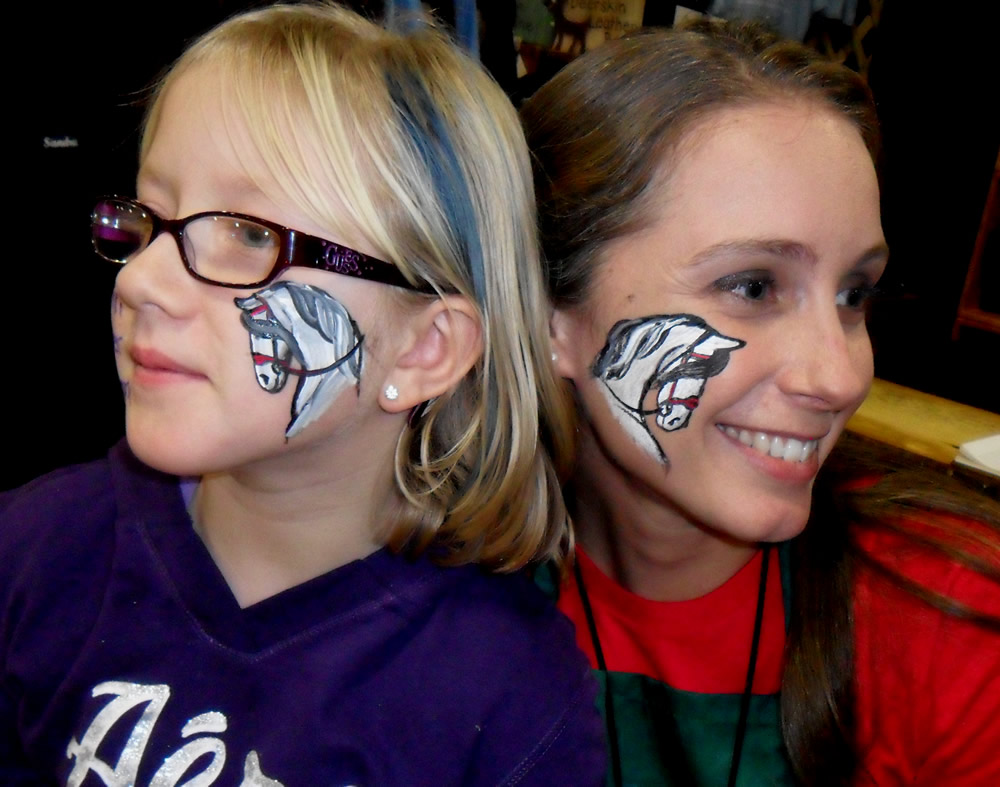How to Ride Your Horse Bridleless - Helpful Tips & Techniques
/Taking off Douwe’s bridle during a performance. Photo credit: Laurie Sheppard
When I was young, I admired the girls that could leap on their horses bareback and ride around without a care in the world. I was too focused on my dressage training to let myself “play” with my horses. There was a part of me that really wanted that relationship with a horse.
The performances that brought me to tears were not the upper level dressage freestyles, but the routines performed bareback and/or bridleless. The idea that "less is more" really inspired me. When I bought Douwe (my Friesian gelding), I let myself have an open mind and no expectations. Once we developed a relationship I started riding him bridleless and he loved it. My horses have taught me so much that I would love to share my experiences with you.
Safety First!
For those of you who are like me, cautious and not overly risky, you will definitely need to prepare your horse, yourself, and your surroundings to start working bridleless. Make sure to wear a helmet and ride in a smaller, fully-enclosed space like a round pen. There are a few KEY things that need to be in place before you attempt your first ride without a bridle. They are:
Independent Balance! To communicate clearly and effectively with your horse (with or without a bridle) you need to have good balance. You should be comfortable and confident at the walk, trot, and canter with NO STIRRUPS and with NO HANDS.
A Trusting Relationship: I do not recommend riding an unfamiliar horse without a bridle or even your own horse if you do not already have a deep, long-standing relationship with them. If there have been circumstances in your past where your horse bolted, bucked, or reared and the two of you have not fully worked through those issues, I suggest you put more time into your relationship before beginning the bridleless process.
A Solid WHOA! Make sure you practice the halt, a lot! Your horse needs to be responsive to your voice/seat cue (there is that clear communication) so that you can feel confident that your horse will stop whenever you ask. That is why I use treats when I ask Douwe to halt (he is a food-oriented fellow). I use my voice in the rolling r noise and he halts and gets a treat. This method is similar to clicker training except I am using my voice for the cue.
Bitless or Halter: See if you can ride in a bitless bridle or just a halter before you take the bridle off completely. Take as much time as you need to feel comfortable with these other options.
What techniques can you use?
I have learned a few different ways to ride a horse bridleless. You will probably know right away which method will work for your horse depending on his individual reactions.
Whip Steering: This is the method I used with Douwe. He seems most responsive having a visual guide for the turns. I have been using two whips and recently dropped down to just one. This technique will not work if your horse is scared/nervous of whips. Here is a video of Douwe performing bridleless in our "Wings of Isis" routine. You can see how I use the wings to help him steer. I was so pleased with his overall performance! He was a good boy!
Neckrope
You can teach your horse to "whoa" from the pressure of a neck rope, also referred to as a “cordeo”. I have begun riding Rovandio bridleless using a neckrope because he needs more input from me to help with his balance. Douwe would prefer that I just left him alone and not use anything related to pressure. To begin with, I rode Rovandio with a neckrope at the same time I was riding with the bridle. I incorporated halts from my voice/seat with some pressure on the neckrope. Once he halted, I released the pressure and gave him a treat. You can use a variety of different "ropes", some horses react better to a stiffer rope and others something softer. Click here to watch an inspiring example of bridleless riding with a neckrope with Alizee Froment and Mistral. She starts off with a bitless bridle and then takes it off and does all the Grand Prix movements bridleless! Scroll down for examples of neckropes and where to buy them online.
Hand Signals
If you have an exceptionally obedient, sensitive horse you can teach them to move away from hand pressure. For example, you would rub/push your right hand forward onto the right side of the neck to ask him to turn left and vice versa. If your horse easily moves away from pressure this can be a good cue. Click here to watch Karen Rolf and her horse Monty use hand signals while riding bridleless. You will enjoy watching this video because it shows the horse doing the same movements at liberty, under saddle and bridleless.
Seat & Leg
If your horse is completely tuned into your seat and legs you can use these cues, along with your voice if needed. Some horses turn beautifully off the leg and weight aids, especially if they are well-balanced and highly trained. It will help you stay very mindful and consistent with your aids. It is important to have a clear reinback cue to help balance your horse off the forehand. Many of the western riders will use the legs towards the shoulders for reinback and that can translate into a half halt while you are in motion as well. Click here to watch an awesome video of Stacy Westfall riding bareback and bridleless using just her seat and leg. She performs their reining freestyle bareback and bridleless! Awesome job!
My neck rope is a simple cotton rope from the hardware store that I spray painted black to match Douwe’s coat. Photo Credit: Kimberly Chason
Where to Buy a Neckrope
Here are different examples of neckropes, also known as a “cordeo”, that you can use with your horse. You can also use a stirrup leather or simple rope from the hardware store to get started. I buy plain cotton rope from the hardware store and then spray it black to blend in with my horse’s coat.
Custom Leather Cordeo
This elegant cordeo is handmade in Denmark by Frida Josephine Nielsen. Not only is the center stone beautiful, it also keeps the cordeo centered on your horse by adding some additional weight. She has a variety of stones you can choose from.
Frida includes an adjustable strap and finishes it off with a square, Spanish cortezia buckle. You can choose whether you would prefer silver or brass for your buckles.
Riding with leather will give you a similar feel to your leather reins and it is also easy to keep clean. Her unique designs would be easy to incorporate with a costume.
Click here to view the different leather options from ChromaCrafts.
Yarn Neckrope with Adornments
If you prefer a soft and flexible feel, then yarn might be a good choice for you. Yarn has a subtle texture for the perfect grip and just a touch of give to ensure comfort against the skin. These are handmade by EQEquineArt on Etsy. She is also an equine bodyworker and incorporates crystals and gemstones to help your horse improve relaxation or energy.
These neckropes are also reminiscent of a mala; which is a wearable reflection of a personal journey, often used in mantra meditation they are a reminder of the connection to a deeper source. When you hold the cordeo (neckrope) to communicate with your horse you will be reminded of this sacred connection and privilege.
Click here to view more themes such as Boho, Winter, Autumn Equinox, and Starry Night to name a few.
Braided Cord Neckrope
If you want something simple, strong, and durable, check out these braided cord neckropes made by Beaux Equestrian. They are braided with 9-strands for thickness and added strength. She makes them in a wide variety of bright, vibrant, and unique colors so you are sure to stand out!
She also has a wide variety of sizes available ranging from Shetland/Pony to Full/XFull. They take extra pride in reusing and recycling their packaging to have less impact on the environment. If you follow them on Instagram (@beaux_equestrian) you can see some beautiful photos of their neckropes in action.
Click here to view their full range of size and color options on Etsy.
I hope you are able to enjoy a wonderful partnership and connection with your horse riding without a bridle. I also have a blog post about riding bareback if you would like to learn more and see my recommendations for bareback pads. Email me at beginthedance@gmail.com if you have any questions or comments.




















